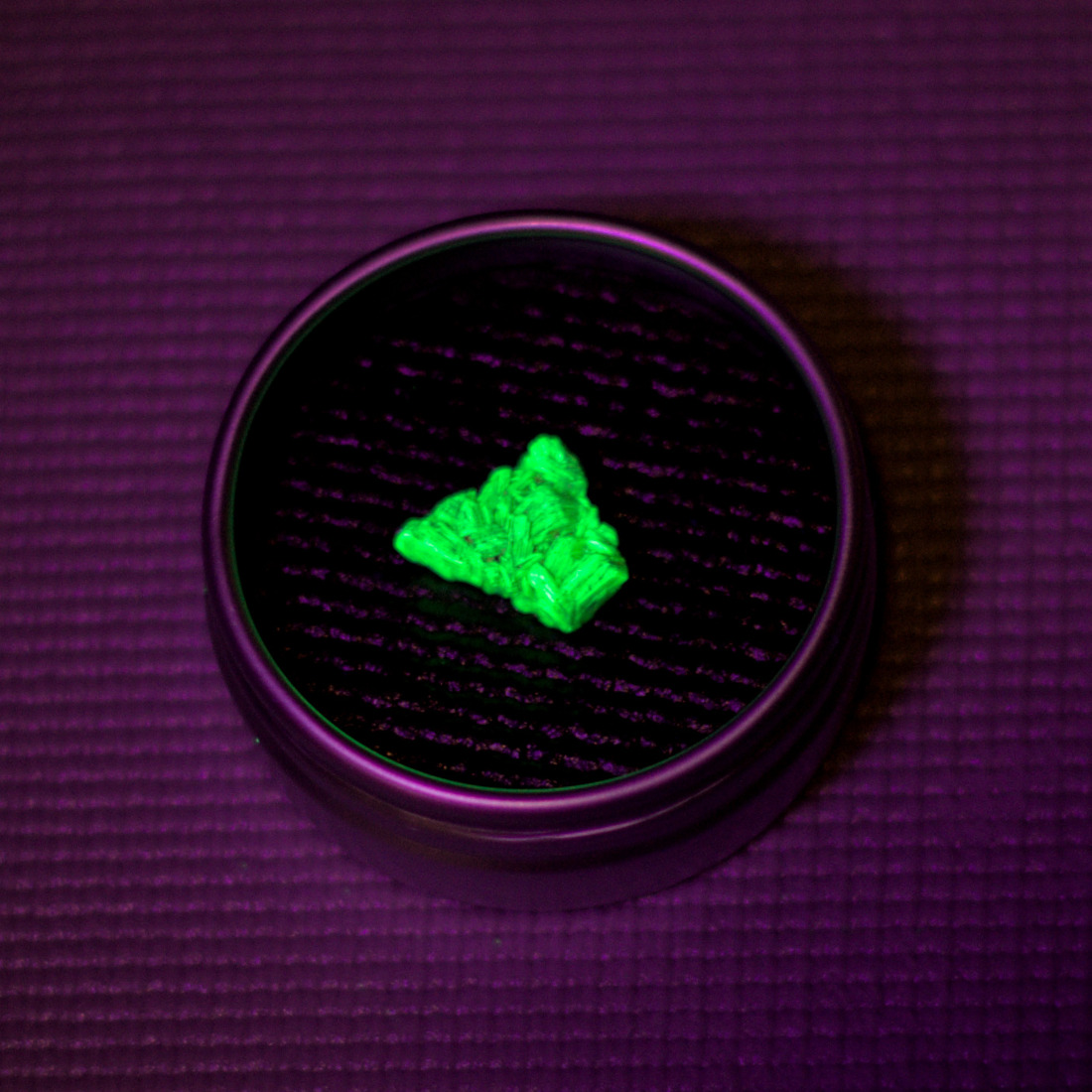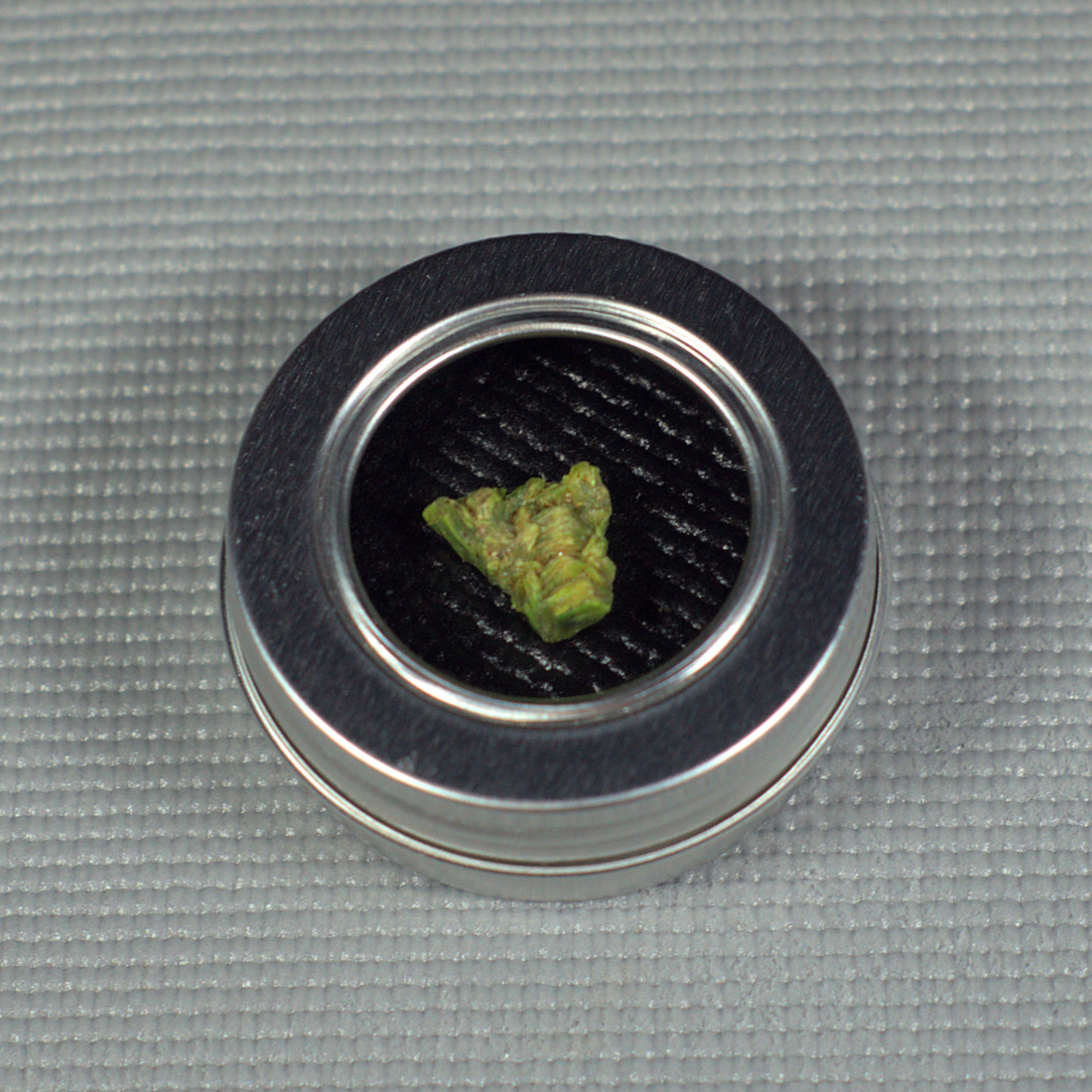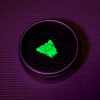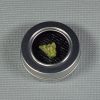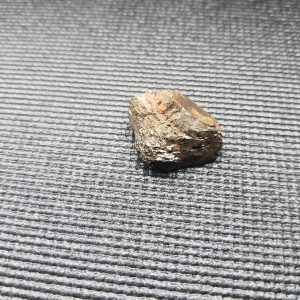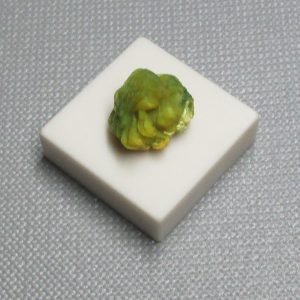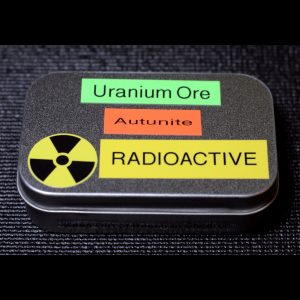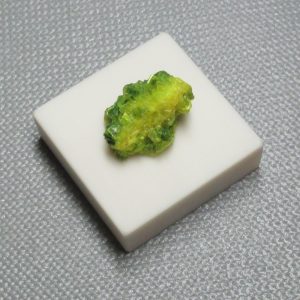NOTE: By purchasing this item you agree that you are 18 years or older and have read our
WARNINGS and NOTICES ! (also serves as FAQ’s)
Mineral: calcium uranyl phosphate — beautifully fluorescent under UV, even regular black light (long UV-A)!
Common Name: autunite (100% natural form, unprocessed)
Activity Level: very high (in terms of natural specimens)
Choose between 1, 2, or 3 gram specimens
Autunite is upwards of half elemental uranium and is particularly active because, in addition to plentiful 238U, it still contains small amounts of hotter matter such as 235U and radium.
Crystalline uranium mica sold in this form and open-able container is great for taking alpha readings, experimenting with radioluminescence with phosphors, or for using inside a cloud chamber!
The thin plastic window on the lid is also useful for taking readings that include a great deal of the activity, but while shielding your Geiger counter’s valuable mica probe window. Bare exposure can contaminate a mica probe window, permanently raising its background level.
Note: The wad of potent uranium ore (one or more large hunks, unlike the vial of small crystals) is bonded to the little rubber mat that can be pulled out of the container to expose more horizontal emissions, good for cloud chamber use without excess direct contact with the ore which can be a bit brittle or can flake off.
Note: Large, Perfectly Formed specimens can be very expensive. Thus these pieces, while almost entirely pure crystalline lamellar autnite (Ur mica) are display seconds that have been rolled around a bit, chipped, or even two or three re-fused in the middle to get the weight slightly exceeding the listed grams. It is the ultimate affordable nuclear geology display bargain for whole pieces (even if your specimen is several pieces it’s not fused gravel) !

